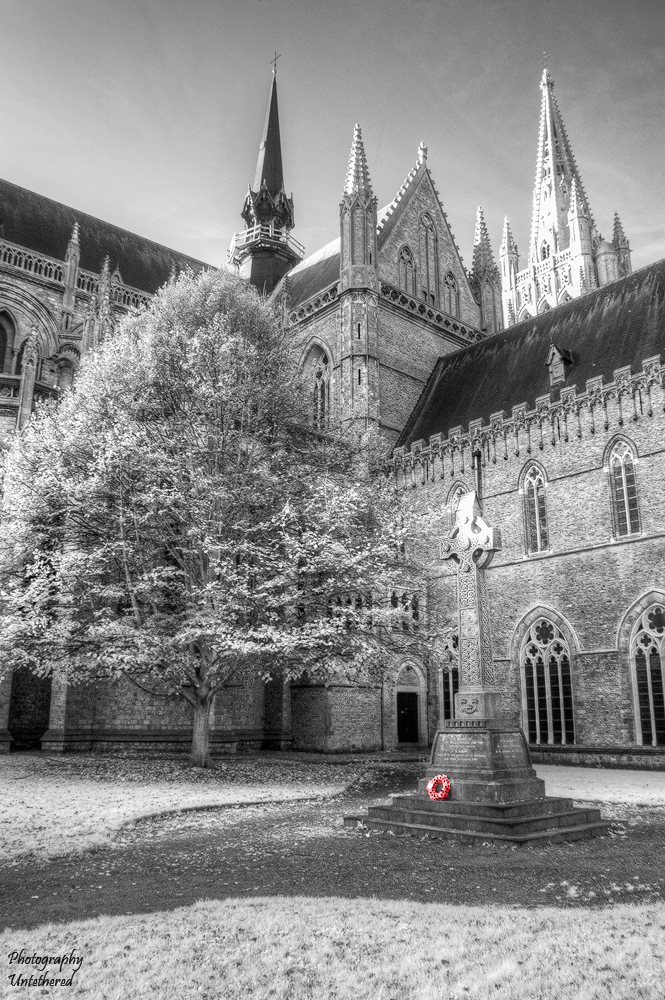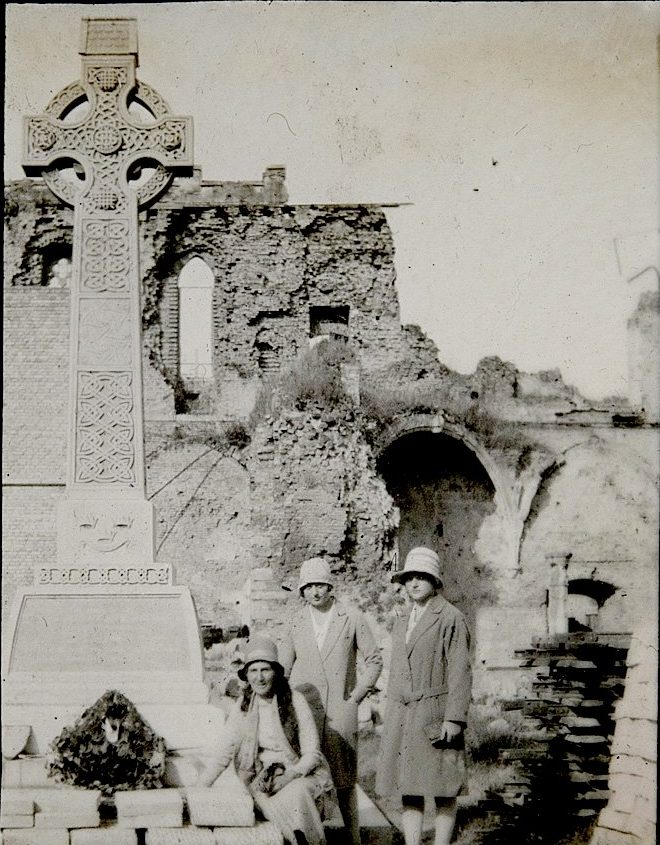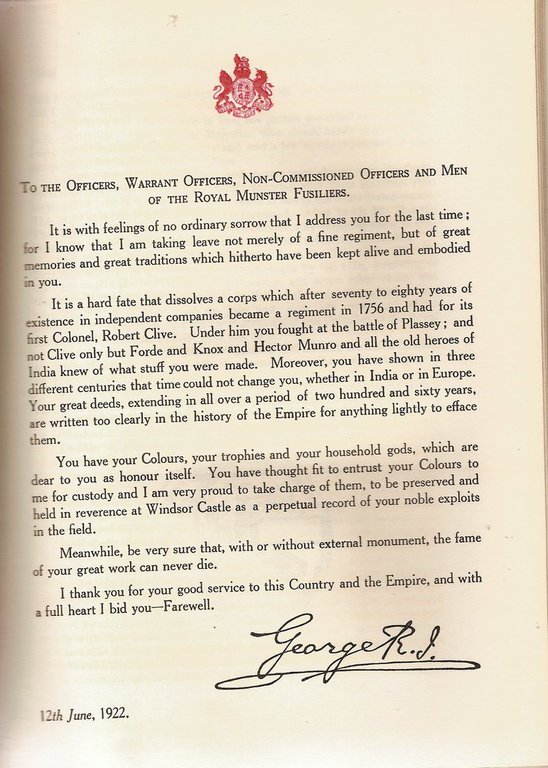
The Munster Memorial stands on the grounds of St Martins cathedral, Ypres, Belgium. The Royal Munster Fusiliers was an infantry regiment of the British Army from 1881 to 1922. The regiment was formed by the merger of the 101st Regiment of Foot (Royal Bengal Fusiliers) and the 104th Regiment of Foot (Bengal Fusiliers). The 101st and 104th were both originally regiments of the East India Company. Tralee, Ireland became the Munsters home depot. The Royal Munster Fusiliers were the county regiment for Cork, Clare, Limerick and Kerry. By and large, it consisted of Irish volunteers.
The Munsters at Etreux:
The Munster regiment served with distinction during the Great War, with nearly 3000 men killed. The Munsters achieved fame during the Mons retreat in August 1914. Supported by a couple of field guns 3 Companies from the 2nd Battalion fought for many hours near Oisny and Étreux. The Munsters were forced back by overwhelming odds to an Orchard not far from the village of Etreux. There, subjected to withering fire and surrounded by enemy forces, the Munsters were left with no choice but to surrender. The 3 companies, were engaged by 7 German Infantry Battalions supported by 3 Gun Batteries, Cavalry and many Maxim guns. Only 4 officers were left, and 127 men, were killed.

The Ypres Memorial commemorating the men killed from the regiment was unveiled on July 13, 1924. The memorial, funded in the Province of Munster by public subscription: was designed and built by John A O’Connell of Cork. St Martins Cathedral on whose grounds it stands, was destroyed during the war, and reconstruction work had just begun when the memorial was erected.


The memorial is a beautiful Celtic Cross of stunning craftsmanship. The front bottom plinth reads in English: “In memory of those men of Munster who died fighting for freedom. A tribute erected by the people of the Province and Cork its capital city “.

“In Memory of the Munster Men Who Gave Their Souls in the Great War for Freedom. The Province of Munster and City of Cork Erected this Stone Cross.”
Irish Free State & Disbandment:
On the establishment of the Irish Free State in 1922, The Royal Munster Fusiliers were disbanded along with the other five Southern Ireland regiments. The Colours of the line battalions were surrendered to King George V for safe keeping. In a letter to the battalion he wrote:
TO THE OFFICERS, WARRANT OFFICERS, NON-COMMISSIONED OFFICERS AND MEN OF THE ROYAL MUNSTER FUSILIERS.
It is with feelings of no ordinary sorrow that I address you for the last time; for I know that I am taking leave not merely of a fine regiment, but of great memories and great traditions which hitherto have been kept alive and embodied in you. It is a hard fate that dissolves a corps which after seventy to eighty years of existence in independent companies became a regiment in 1756 and had for its first Colonel, Robert Clive.
Under him you fought at the battle of Plassey; and not Clive only but Forde and Knox and Hector Munro and all the old heroes of India knew of what stuff you were made. Moreover, you have shown in three different centuries that time could not change you, whether in India or in Europe. Your great deeds, extending in all over a period of two hundred and sixty years, are written too clearly in the history of the Empire for anything lightly to efface them. You have your Colours, your trophies and your household gods, which are dear to you as honour itself.
You have thought fit to entrust your Colours to me for custody and I am very proud to take charge of them, to be preserved and held in reverence at Windsor Castle as a perpetual record of your noble exploits in the field. Meanwhile, be very sure that, with or without external monument, the fame of your great work can never die. I thank you for your good service to this country and the Empire, and with a full heart I bid you–Farewell.
George
12th June, 1922.
Although not based on the Munsters, for anyone looking for a book on the Irish in the Great War, I can recommend this one: “The letters of John ‘Max’ Staniforth” are among the most perceptive, graphic and evocative personal records of a soldier’s life to have come down to us from the Great War.”
The website is self-funded, and my work is free. All profits from the sites product links go to SightSavers; if you have enjoyed any aspect of this site please consider a giving a donation here. No one should go blind from avoidable causes. How many people’s sight will you help us save today?
Fragmented Memory 🙂


